Mastering Roof Measurement with Drone Technology: A Comprehensive Guide
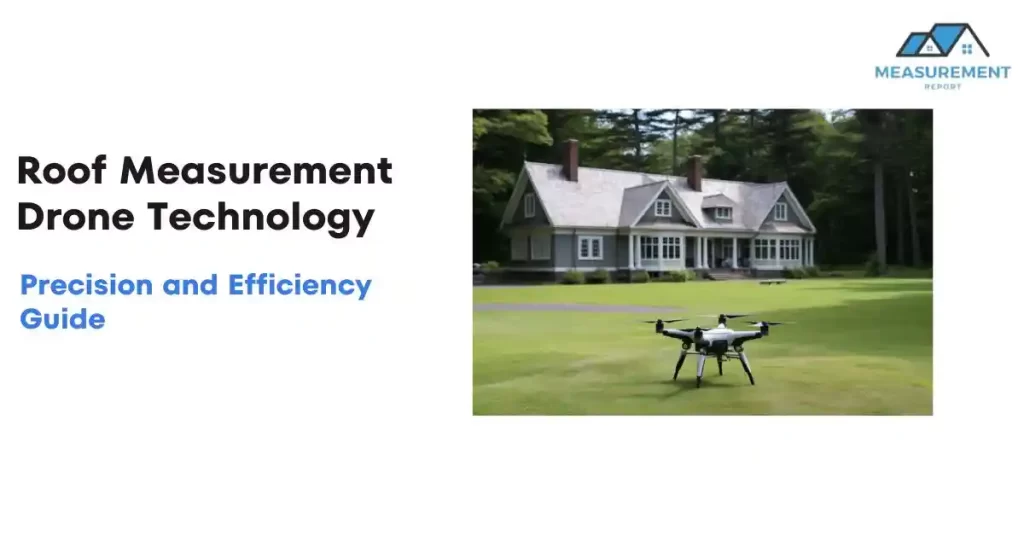
In recent years, the integration of drone technology into various industries has marked a significant leap forward in efficiency and innovation. This is particularly evident in the field of roof measurement, where the adoption of drone technology has revolutionized traditional practices. Drones, equipped with advanced sensors and cameras, offer a new dimension of accuracy and safety, streamlining the process of roof inspection and measurement. Their ability to capture detailed aerial views has not only enhanced the precision of measurements but also significantly reduced the time and labor involved in manual inspections.
The relevance of drone technology in the roofing industry cannot be overstated. With an increasing focus on precision and safety, drones have emerged as a vital tool in modern construction and roofing practices. They provide key advantages, including improved accuracy in measurements, enhanced safety for workers, and a more efficient workflow. This transition to drone-assisted roof assessment reflects a broader trend in the construction sector, where technology is being leveraged to optimize processes and outcomes.
The integration of drones in construction and roofing aligns with the industry’s ongoing pursuit of innovation and efficiency. As we delve deeper into this article, we will explore the various facets of roof measurement drone technology, its impact on the roofing industry, and the benefits it brings to construction practices at large. Through this exploration, we aim to provide a comprehensive understanding of how drone technology is not just reshaping roof measurement but also setting new standards in the construction industry.
How Drones Measure a Roof Accurately
Drones have brought a paradigm shift in the way roof measurements are conducted, offering unprecedented accuracy and efficiency. The core of this transformation lies in the sophisticated technology and methods employed by these aerial devices. Equipped with high-resolution cameras and advanced sensors, drones can capture detailed images and data of roofing structures from various angles and elevations. This capability allows for a comprehensive analysis of the roof’s dimensions, slopes, and other critical features, which were previously challenging to measure with traditional, ground-based methods.
The precision in roof measurement is further enhanced by the integration of sophisticated software. These software solutions process the drone-captured data, converting images and readings into accurate, detailed 3D models and measurements of the roof structure. The use of GPS technology and photogrammetry in drones plays a significant role in ensuring this accuracy. By triangulating data from multiple images, drones can create exact replicas of the roof’s shape and size, down to the minutest detail.
This precision is not just about getting the right measurements; it’s about achieving a level of detail and accuracy that was previously unattainable. The advanced sensors in these drones can detect nuances in roof structures, identify potential problem areas, and provide data that helps in making informed decisions for maintenance, repair, or replacement. With the integration of roof measurement drone technology, the roofing industry is witnessing a new era of precision and reliability, redefining the standards of roof measurement accuracy.
Advantages of Using Drone Technology for Roof Measurement
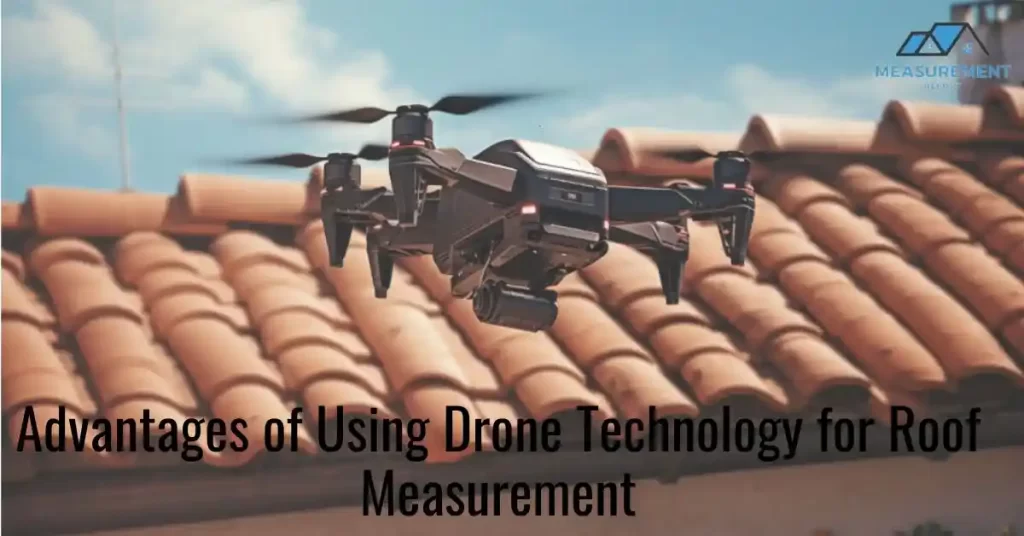
The adoption of drone technology for roof measurement has brought a multitude of advantages, chief among them being efficiency, safety, and accuracy, which significantly eclipse the capabilities of traditional roof measurement methods.
Efficiency: Drones drastically reduce the time required for roof inspections and measurements. Traditional methods involve manual labor, which is time-consuming and often requires multiple days to cover a large area. Drones, on the other hand, can capture comprehensive data of an entire roof within a few minutes. This efficiency is not just in terms of time but also in resource allocation, as fewer personnel are needed on-site, thereby streamlining the entire process.
Safety: One of the most significant benefits of using drones is the enhancement of safety. Traditional roof measurement methods involve physical climbing and navigating potentially dangerous roof surfaces, posing risks of falls and injuries. Drones eliminate the need for physical presence on the roof, ensuring that the risk of accidents is greatly minimized. This aspect is particularly crucial in the roofing industry, where safety is a perennial concern.
Accuracy: The accuracy provided by drone technology is unparalleled. Drones equipped with high-resolution cameras and advanced sensors offer detailed and precise data, which is far superior to the estimates often made in manual inspections. This accuracy is vital not just for the purpose of measurement but also for identifying potential issues like damages or wear and tear, which might be overlooked by the human eye.
When compared to traditional methods, the benefits of drone technology in roof measurement are clear. Drones provide a safer, faster, and more accurate alternative, revolutionizing the way the roofing industry operates. This technological advancement aligns perfectly with the industry’s ongoing quest for innovation, efficiency, and safety, making drones an indispensable tool in modern roofing practices.
Legal Regulations for Flying Drones for Roof Assessment
Navigating the legal landscape is a crucial aspect of utilizing drones for roof assessments. The use of drones, particularly in commercial applications like roof surveys, is governed by a series of regulations and laws that aim to ensure safety and privacy. Understanding and complying with these regulations is essential for any individual or business planning to use drones for roof measurement.
Regulatory Framework: In many countries, the use of drones is regulated by national aviation authorities. For instance, in the United States, the Federal Aviation Administration (FAA) sets the rules for drone operations. These regulations often include requirements such as drone registration, pilot certification, and adherence to specific flight rules. For commercial use, operators typically need to obtain a special license or certification that demonstrates their competency in safely handling drone equipment.
Operational Restrictions: There are often specific operational restrictions that drone pilots must follow. These can include altitude limits, no-fly zones (such as near airports or military bases), and rules about flying over private property or populated areas. Ensuring that drones are not invading privacy or posing a risk to public safety is a critical consideration.
Guidelines for Compliance: To comply with these regulations, drone operators should:
- Register their drones with the relevant authorities.
- Obtain the necessary certifications or licenses for commercial drone use.
- Stay informed about and adhere to local and national drone flying laws, including airspace restrictions.
- Be mindful of privacy concerns, particularly when flying drones over residential areas.
- Ensure that their drone operations are always conducted in a safe and responsible manner.
It’s also advisable for drone operators to keep abreast of any changes in regulations, as the legal landscape surrounding drone technology is constantly evolving. By staying informed and compliant, drone operators can ensure that their use of drones for roof surveys is both legal and ethically sound, fostering a responsible and sustainable integration of this technology in the roofing industry.
Feasibility and limitations of using consumer-grade drones
The use of consumer-grade drones for roof measurement has become an intriguing option for many, thanks to their accessibility and relative affordability. However, utilizing these drones for roof measurement comes with its own set of considerations, including both feasibility and limitations.
Feasibility of Consumer-Grade Drones: Consumer-grade drones, often designed for photography or recreational use, can be repurposed for roof measurement tasks. These drones are generally equipped with high-quality cameras and basic GPS functionality, which can be sufficient for capturing overhead images of roofs. For small-scale projects or preliminary assessments, consumer-grade drones can offer a quick and cost-effective solution. They are particularly useful for homeowners, small businesses, or contractors who require occasional roof inspections without the need for high-precision data.
Limitations: However, there are notable limitations when using consumer-grade drones for roof measurement:
- Accuracy and Resolution: These drones may not have the advanced sensors and high-resolution cameras required for detailed, precise measurements, especially in complex roofing projects.
- Flight Stability and Battery Life: Consumer drones might lack the stability and extended battery life necessary for lengthy or large-scale inspections.
- Data Processing: The software that comes with consumer drones may not be specialized for roof measurements, necessitating additional tools for data analysis.
- Durability and Weather Resistance: Consumer-grade drones may not perform well in adverse weather conditions and might lack the robustness required for regular professional use.
Advice on Selecting Drones: When considering a consumer-grade drone for roof measurement, the following tips can be helpful:
- Camera Quality: Look for drones with the best possible camera resolution and stability features within your budget.
- Battery Life: Choose a drone with sufficient battery life to cover the entire area of the roof without needing a recharge.
- Ease of Use: Consider drones that are user-friendly, especially if you are not experienced in piloting drones.
- Software Compatibility: Ensure that the drone is compatible with third-party software solutions for roof measurement, as this can greatly enhance the utility of the data collected.
- Durability: Assess the build quality and read reviews to understand how the drone performs under various conditions.
In conclusion, while consumer-grade drones can be a viable option for roof measurement, especially for small-scale or infrequent projects, their limitations must be carefully considered. For more complex or large-scale roof measurements, professional-grade drones with specialized equipment might be a more appropriate choice.
Software for Processing Drone-Captured Roof Data
For processing drone-captured roof data, several software solutions stand out for their capabilities in analysis and integration with roofing cost estimation tools. Here are some recommended options:
- DroneDeploy: DroneDeploy is a versatile tool for roof inspection, offering features such as enhanced 3D flight mode and thermal processing. This software allows users to capture critical roof details and quickly identify and address defects that are invisible to the naked eye. It also enables the creation of detailed defect reports, making it a popular choice among professionals in solar, electric, real estate enterprises, and even drone hobbyists.
- Pix4D: Pix4D is another widely recognized software for drone roof inspection. It is known for its robust data analysis features and ease of use. The software is capable of processing high-resolution images captured by drones to generate detailed 3D models and accurate measurements, essential for precise roof assessment.
- PrecisionHawk: This software is noted for its compatibility with various drone hardware, offering a flexible solution for different roof measurement needs. PrecisionHawk integrates advanced data analysis tools that are vital for comprehensive roof inspections and measurements.
- Zeitview: Formerly known as DroneBase, Zeitview has expanded its capabilities with AI-enabled Property Insights. This platform now includes features like thermal inspections for commercial properties and AI/ML-based damage assessment. Such advancements make Zeitview an excellent choice for more complex and detailed roof evaluations.
- IMGING: Highlighted for revolutionizing traditional roof measurement methods, IMGING is another top software option. It provides precision, efficiency, and safety in drone roof inspections, contributing to its popularity in the industry.
When selecting software for processing drone-captured roof data, consider factors such as compatibility with your drone, ease of use, and specific features required for your roof measurement tasks. Additionally, integration with roofing cost estimation tools can be a significant advantage, streamlining the process from inspection to cost analysis. Each of these software solutions offers unique features and capabilities, making it essential to choose one that best fits your specific needs and preferences in roof measurement and analysis.
Drones in different weather conditions for roof measurement
The effectiveness of drones in various weather conditions is a critical factor to consider, especially when it comes to roof measurement tasks. The performance of drones can vary significantly depending on the weather, which poses certain challenges and necessitates specific technological adaptations for optimal functionality.
Effectiveness in Different Weather Conditions:
- Sunny and Clear Conditions: In ideal weather conditions, such as on clear, sunny days, drones perform at their best. High visibility and stable atmospheric conditions allow for optimal camera usage and precise measurements.
- Windy Conditions: Moderate wind can impact the stability and battery efficiency of drones. While most commercial-grade drones are designed to withstand winds up to certain limits, excessively windy conditions can reduce accuracy and increase the risk of damage or loss of control.
- Rainy Conditions: Rain poses a significant challenge. Most consumer and many commercial drones are not waterproof, and flying in the rain can damage the drone’s electronic components. Furthermore, wet surfaces can affect the accuracy of roof measurements due to reflective issues and the potential for obscured imagery.
- Cold Temperatures: Drones can usually operate in cold temperatures, but battery performance is often negatively impacted in extreme cold. Pilots may experience reduced flight times and slower response times from the drone’s control system.
Technological Adaptations for All-Weather Functionality:
- Water-Resistant and Waterproof Drones: Some high-end drones are designed to be water-resistant or even waterproof, allowing for operation in light rain.
- Enhanced Stability Features: Advanced drones come equipped with enhanced stability features that allow them to remain stable in windy conditions, ensuring more accurate data capture.
- Thermal Imaging: In conditions where visibility is poor, such as in foggy or misty weather, drones equipped with thermal imaging cameras can be used. These cameras can detect and measure heat, which can be beneficial for certain types of roof inspections.
- Heated Batteries: Some drones are equipped with battery heating systems to mitigate the impact of cold weather, ensuring more reliable performance in low temperatures.
- Rugged Design: Drones built for industrial use often feature a rugged design, making them more durable and capable of withstanding harsher weather conditions.
In summary, while drones are highly effective in ideal weather conditions, their performance can be impacted by adverse weather. Technological advancements in drone design, such as water resistance, enhanced stability, thermal imaging, and heated batteries, are helping to extend the range of conditions under which drones can effectively perform roof measurements. However, it’s important to always consider the specific capabilities and limitations of the drone model being used and to adhere to safety guidelines when operating in less-than-ideal weather conditions.
Drone Safety During Roof Measurement
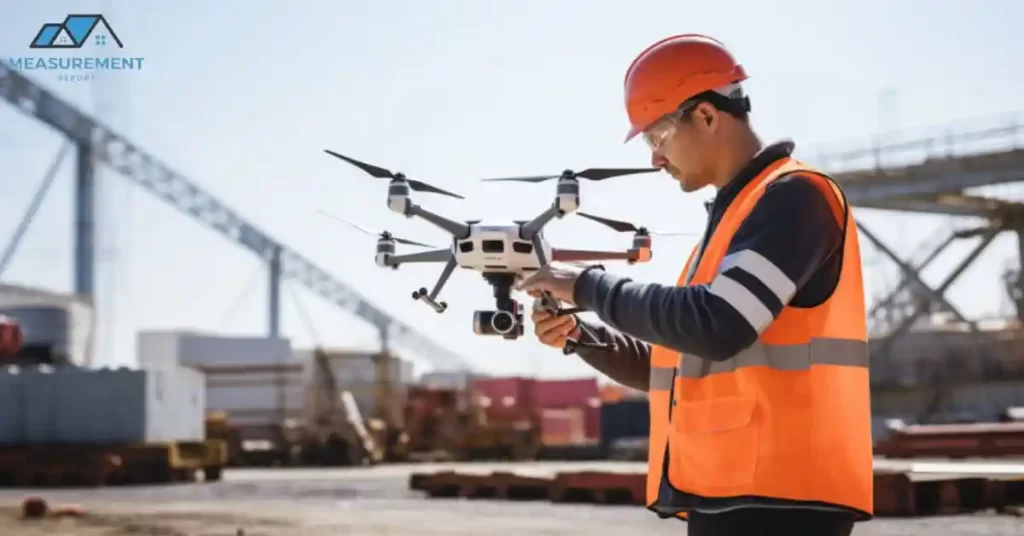
Ensuring the safety of drone operations during roof measurements is paramount, not only for the protection of the equipment but also for the safety of people and property in the vicinity. Adhering to best practices and being aware of potential hazards can significantly mitigate risks.
Best Practices for Drone Safety:
- Pre-Flight Planning:
- Conduct thorough pre-flight checks of the drone, ensuring all components are in good working condition.
- Check the weather forecast to avoid flying in adverse conditions.
- Plan the flight path in advance, taking into account any obstacles such as trees, power lines, or buildings.
- Compliance with Regulations:
- Familiarize yourself with and adhere to local and national drone flying laws, including height restrictions and no-fly zones.
- Ensure that the drone is registered and marked with the registration number if required by law.
- Pilot Training and Proficiency:
- Ensure that the drone operator is properly trained and proficient in flying the specific model of the drone being used.
- Regularly practice flying in different conditions to maintain and improve piloting skills.
- Maintaining Visual Line of Sight:
- Always keep the drone within visual line of sight to monitor its position and behavior.
- Use a spotter if necessary, especially in complex environments or congested areas.
- Batteries and Power Management:
- Regularly inspect batteries for any signs of damage or swelling.
- Monitor battery levels during flight and ensure enough power is reserved for the drone to return safely.
Addressing Potential Hazards and Preventive Measures:
- Collision Avoidance:
- Be aware of and avoid potential collisions with other aircraft, objects, or people.
- Utilize drones with built-in collision avoidance systems if available.
- Property Damage:
- Fly at a safe altitude to avoid causing damage to the roof or nearby structures.
- Be cautious when flying near windows or fragile structures.
- Interference with Aircraft:
- Avoid flying in restricted airspace and near airports.
- Be aware of and comply with any temporary flight restrictions (TFRs).
- Data Privacy and Security:
- Respect privacy concerns when capturing images or videos.
- Securely store and handle any data collected to prevent unauthorized access.
- Emergency Procedures:
- Be prepared with an emergency plan in case of drone failure or loss of control.
- Know how to safely land or ditch the drone if necessary.
By following these best practices and being mindful of potential hazards, drone operators can ensure a high level of safety during roof inspections. This not only protects the drone and the operator but also upholds the safety and privacy of the people and properties involved.
Limitations of Drone-Based Roof Measurement
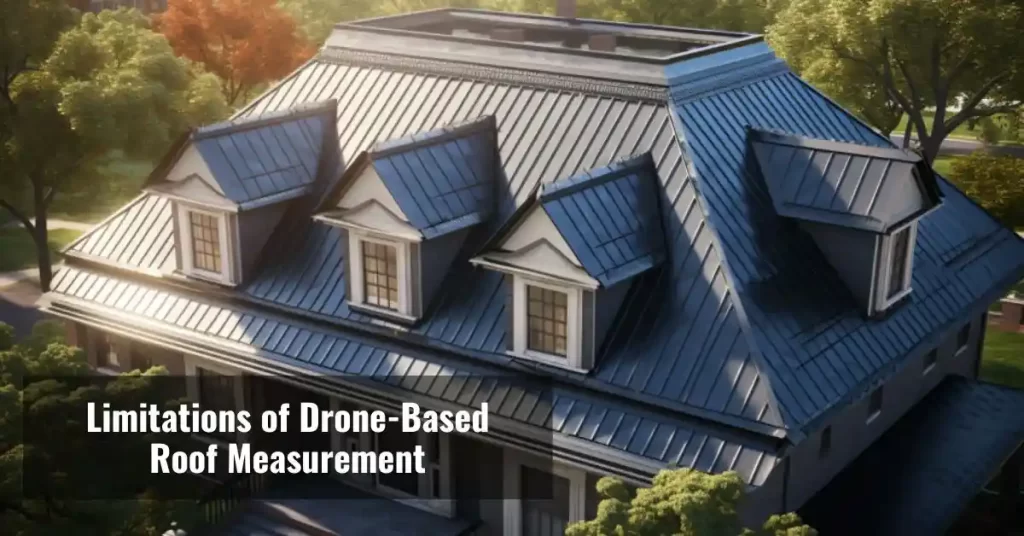
While drone-based roof measurement offers numerous advantages, there are also technical and practical limitations to be considered. Understanding these limitations is crucial for effective and realistic application of drone technology in roof measurement.
Technical Limitations:
- Accuracy and Resolution: While drones provide high levels of accuracy, the resolution of the camera and the quality of sensors can limit the detail captured, especially for very complex roof structures or materials that do not reflect well.
- Battery Life and Flight Time: Drones have limited battery life, which restricts the duration of continuous operation. This can be a challenge for large or multiple roof inspections in a single session.
- Weather Dependency: Drones are generally sensitive to weather conditions. Operations can be hindered by rain, strong winds, or extreme temperatures, affecting scheduling and planning.
- Data Processing Requirements: The data captured by drones require significant processing and analysis, which can be time-consuming and require specialized software.
- Signal Interference and GPS Accuracy: Urban environments with high electromagnetic interference can affect the drone’s GPS accuracy and stability, potentially leading to less precise measurements.
Practical Limitations:
- Regulatory Restrictions: Legal restrictions on drone flights, especially in urban or populated areas, can limit where and when drones can be used for roof measurement.
- Privacy Concerns: Flying drones over residential areas can raise privacy concerns, particularly if cameras capture images of neighboring properties.
- Skill and Training Requirements: Operating a drone for roof measurement requires specific skills and knowledge, both in terms of flying the drone and interpreting the data collected.
Overcoming These Challenges:
- Investing in Advanced Technology: Utilizing drones with higher-resolution cameras, better stability, and longer battery life can mitigate many of the technical limitations.
- Scheduling Flexibility: Planning operations with weather conditions in mind and having flexible scheduling can help navigate weather-related challenges.
- Data Processing Tools: Employing advanced software that can efficiently process and analyze the captured data can minimize the time and effort required in post-processing.
- Compliance and Training: Ensuring full compliance with local drone regulations and investing in proper training for drone operators can address regulatory and skill-related limitations.
- Privacy Measures: Implementing strict protocols for data capture and storage, and ensuring that only the necessary areas are photographed, can help address privacy concerns.
By acknowledging and addressing these limitations, the use of drones for roof measurement can be optimized, ensuring that the benefits are maximized while minimizing the challenges.
Cost Analysis of Implementing Drone Technology in Roofing

Implementing drone technology in roofing involves various costs, ranging from the initial investment in the drone itself to ongoing expenses like maintenance and software subscriptions. A detailed cost analysis, coupled with a cost-benefit evaluation, can provide a clearer picture of what to expect when adopting this technology.
Initial Investment Costs
- Drone Purchase:
- Consumer-grade drones can range from a few hundred to a few thousand dollars, depending on their capabilities.
- Professional-grade drones, which offer higher stability, better cameras, and more robust features, can cost anywhere from $1,000 to over $10,000.
- Additional Equipment:
- Extra batteries, chargers, carrying cases, and additional sensors or cameras might be necessary, adding to the initial cost.
- Software Subscriptions:
- Roof measurement and data processing software can require subscriptions or licenses, which may have monthly or annual fees.
- Training and Certification:
- Costs for training courses for drone piloting and certification, if required, should also be considered.
Ongoing Operational Costs
- Maintenance and Repairs:
- Regular maintenance, software updates, and potential repairs will incur costs.
- The frequency and cost will depend on usage intensity and drone model.
- Insurance:
- Insurance for the drone, which may be required or highly recommended, especially for commercial use.
- Software Updates:
- Continuous software updates or upgrades might be necessary to ensure optimal performance.
Cost-Benefit Analysis
Benefits:
- Increased Efficiency:
- Drones significantly reduce the time needed for roof inspections, leading to more jobs completed in less time.
- Enhanced Safety:
- Reduces the need for physical roof access, minimizing the risk of falls and injuries, potentially lowering insurance costs.
- Improved Accuracy:
- High-precision measurements can lead to better service quality and customer satisfaction.
- Marketing Advantage:
- Offering drone-based services can distinguish a business in the market, attracting more customers.
Cost Savings:
- Reduced Labor Costs:
- Fewer personnel needed for manual inspections.
- Decreased Liability:
- Less physical roof access can reduce the likelihood of accidents.
- Efficient Data Processing:
- Faster turnaround from inspection to report generation can lead to increased business capacity.
The initial investment in drone technology for roofing can be significant, especially when opting for high-end models and software. However, the long-term benefits like increased efficiency, safety, and accuracy, along with the potential for cost savings in labor and liability, present a compelling case for the investment. Businesses should consider their specific operational needs and scale to determine the most cost-effective drone solution. The adoption of drone technology can not only improve operational efficiency but also provide a competitive edge in the roofing industry.
Success Stories in Drone Technology for Roof Measurement
The integration of drone technology in roof measurement has yielded numerous success stories, showcasing the significant impact it has had on businesses in terms of operational efficiency and overall effectiveness. Here are some notable examples and case studies:
Case Study 1: Large Roofing Company
A well-established roofing company adopted drone technology for large-scale commercial roof inspections. Previously reliant on manual inspections, the company faced challenges with time-consuming processes and safety risks.
Impact:
- Efficiency Gains: The use of drones reduced the roof inspection time by over 50%. What previously took several days to complete could now be done in just a few hours.
- Improved Safety: The need for manual, on-roof inspections was greatly reduced, leading to fewer workplace accidents and lower insurance costs.
- Enhanced Accuracy: Drones provided more accurate measurements and comprehensive data, leading to better-informed repair and maintenance decisions.
Case Study 2: Independent Roofing Contractor
An independent contractor specializing in residential roofing turned to drones to enhance service offerings. The contractor used a mid-range drone equipped with a high-resolution camera and basic roof measurement software.
Impact:
- Business Growth: The contractor was able to take on more clients due to the time saved on each inspection.
- Customer Satisfaction: Clients appreciated the detailed reports and visual data, leading to higher satisfaction and more referrals.
- Competitive Edge: Offering drone-based inspections gave the contractor a distinct advantage in the local market.
Case Study 3: Insurance Company
An insurance company implemented drones to assess roof damage claims. The goal was to increase the speed and accuracy of claim processing.
Impact:
- Rapid Claim Processing: Drone inspections expedited the claim review process, enabling faster payouts and improved customer experience.
- Reduced Costs: The company saw a decrease in operational costs as drones eliminated the need for external inspection services.
- Accurate Assessments: Drones provided detailed, unbiased data, leading to fairer and more accurate claim resolutions.
Global Trends
Beyond individual case studies, a global trend has emerged where businesses in roofing, construction, and insurance are increasingly relying on drones. This shift has led to:
- Industry-Wide Efficiency Gains: Standardizing the use of drones for roof measurements has streamlined operations across these sectors.
- Innovation and Technology Adoption: The success stories have spurred further technological advancements, as companies seek to leverage the full potential of drones.
These success stories highlight the transformative impact of drone technology in roof measurement. Businesses across various sectors are reaping the benefits of improved efficiency, safety, and accuracy. As the technology continues to evolve, its adoption is likely to become more widespread, further revolutionizing the way roof measurements are conducted.
Conclusion
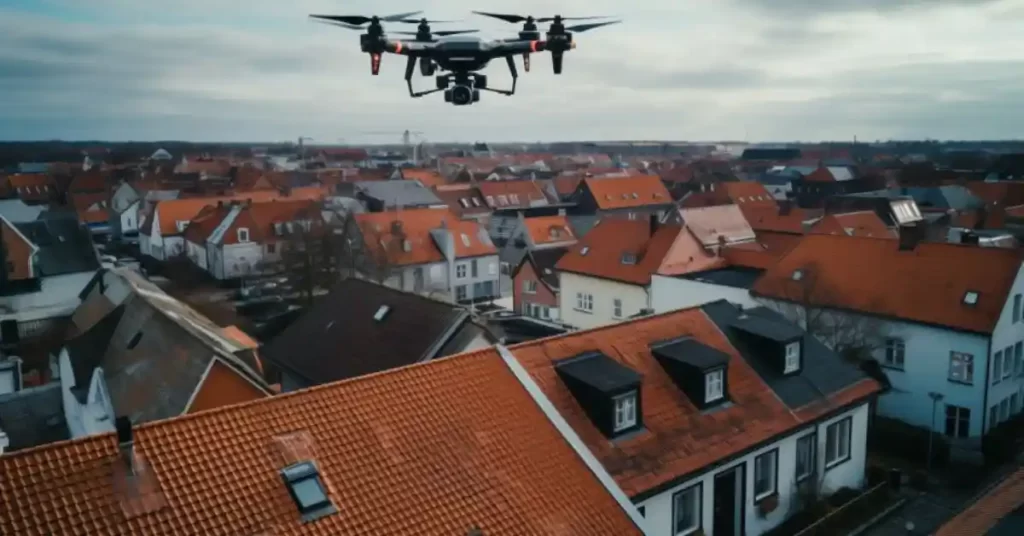
In conclusion, the advent of drone technology in roof measurement marks a significant evolution in the roofing industry. Key insights from its adoption reveal a landscape where efficiency, safety, and accuracy are greatly enhanced. Drones have streamlined the process of roof inspection and measurement, significantly reducing the time and manpower required for such tasks. They have introduced a new level of precision in measurements, providing detailed, accurate data that was previously challenging to obtain. Furthermore, the safety benefits cannot be overstated; drones minimize the need for physical roof access, thereby reducing the risk of falls and injuries.
Looking to the future, drone technology in roof measurement holds immense promise. As the technology continues to advance, we can expect even greater improvements in drone capabilities, including enhanced battery life, more sophisticated data analysis tools, and improved resilience in various weather conditions. These advancements will likely open up new opportunities and applications within the roofing industry and beyond.
For businesses in the roofing sector, the integration of drone technology is not just a matter of keeping up with trends; it’s about embracing a tool that offers tangible improvements in operational efficiency and service quality. By adopting this technology, companies can expect to see not only an increase in productivity but also an enhancement in their competitive edge. In an industry where precision and safety are paramount, drone technology emerges as an invaluable asset, one that is poised to redefine the standards of roof measurement and inspection.
Related Article –
- Optimizing Roof Measurement for Solar Panels: Ultimate Guide
- Mastering Commercial Roof Measurement: Techniques and Tools
- TPO Roofing: Everything You Need to Know

Meet William Adams, a seasoned roofing expert with over 30 years of hands-on experience in the industry. Having worked tirelessly under the scorching sun and through the fiercest storms, William brings a wealth of knowledge and expertise to the table. Hailing from the heart of the USA, he’s witnessed the evolution of roofing practices firsthand, mastering every aspect along the way. Now retired from the field, William spends his days cherishing time with his loved ones while sharing his invaluable insights through this platform. With William at the helm, you can trust that every tip, advice, and recommendation provided is backed by years of real-world experience and unwavering dedication to quality craftsmanship. Join us as we journey through the world of roofing, guided by the wisdom and passion of a true industry veteran.
